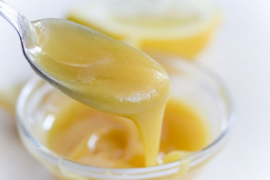We all crave something sweet once in a while. In truth candy can be hard to avoid, as it is common place in just about every store you walk in to. Whether it’s the candy aisle in the store or candy by the checkout counters, the temptation is real. While many people consider candy a harmless indulgence, many studies are validating the fact that artificial colors, preservatives and additives are in fact harming our health, especially the health of young children.
Understanding natural and organic food labels
Many people assume that the words natural or organic on a food label mean it is healthy, but that’s not necessarily so. In fact the term Natural really has no meaning, as there are no FDA guidelines behind it. The FDA has not developed a definition for use of the term natural on a food label. So while something can be natural, this labeling does not address the use of pesticides or food processing methods such as irradiation. Personally I do not think a food that has been irradiated is natural.
The USDA also has 3 categories for the term organic:
- 100% organic- Foods that don’t contain any non-organic ingredients can be labeled as “100% organic”.
- Organic-Foods can be labeled simply “organic” if they contain 95% organic ingredients, and the other 5% do not contain growth hormones.
- Made with organic ingredients – Foods that have at least 70% organically produced ingredients can use the term “made with organic ingredients”. Up to 30% of the contents can be non-organic.
Ingredients that are a cause for concern
You may feel like you need a dictionary when reading some food labels, as the ingredients usually contain words that are unpronounceable. My general theory about labels is, if you can’t pronounce it or don’t know what it is, you probably shouldn’t be eating it.
While this is not a complete list, here are some of the basics to avoid.
Artificial Sweeteners-Aspartame artificial sweetener accounts for 75% of adverse reactions to food additives reported to the FDA. Artificial sweeteners have numerous brand names, here is a partial list; Neotame-brand name Newtame, Saccharin- brand name Sweet ‘N Low, Aspartame –brand name Equal, Acesulfame potassium – brand name Sweet One, Sucralose- brand name Splenda.
Artificial Colors– Throughout history, herbs and spices have been added to foods to give them additional flavor, color and make them more appealing. But man’s synthetic food coloring is another story. Today most artificial colors are made from coal tar derivatives.
Food Dyes-This ingredient is linked to cancer, hyperactivity and numerous allergic reactions. The most commonly used food dyes, Red 40, Yellow 5 and Yellow 6 are contaminated with known carcinogens. In spite of food dye concerns, food is big business and manufacturers use about 15 million pounds of dyes in our food.
Sugar-While it is common knowledge that too much sugar can cause hyperactivity, tooth decay, as well as increasing the risk for obesity, Dr. Julie L. Wei, a pediatric otolaryngologist at Nemours Children’s Hospital in Orlando, Fla, states that one of the most common side effects sugar can have on children are cold-like symptoms.
High Fructose Corn Syrup-This highly refined sweetener is commonly found in many processed foods. It also contributes to diabetes, increases your LDL cholesterol levels and helps people to gain weight faster than any other additive.
Natural Flavor/Color-This generic label gives you no clue to what was added to the product you are buying. Carmine, for example (identified on labels as Crimson Lake, Cochineal, Natural Red 4, E120 or C.I. 75470) while a “natural” ingredient, is actually made from ground up cochineal insects. It can cause a wide range of allergic reactions from hives to anaphylactic shock.
Chemical Preservatives– Obviously a complete list of preservatives would be quite extensive, so let’s take a quick look at three common additives.
- BHA-Used as a preservative and stabilizer in foods and cosmetics. EWG rates it between a 5-7, due to high concerns on its potential effects on endocrine disruption and organ system toxicity. The FDA classifies BHA as generally recognized as safe, while the National Institutes of Health classify it as “reasonably anticipated to be a human carcinogen”
- Sodium Benzoate (Benzoic Acid)– Used to prevent mold, fungi and yeast growth. This additive may increase hyperactivity in children. Sodium benzoate in soft drinks may also react with added vitamin C to make benzene, a cancer-causing substance.
- Sulfites-If your candy bar has dried fruit in it. It likely had sulfites added. This common allergen is linked to headaches, rashes, behavioral problems and asthma attacks.
 Elderberry Gummies
Elderberry Gummies
Try these healthy candy recipes at home
So what can you do if you have a sweet craving? Rather than highly processed candies, consider trying one of these healthier versions of some of your favorite candy treats.
Dark Chocolate Nut Butter Cups
Chocolate Coconut Quinoa Crisp
Homemade Peanut Butter M & M’s
What to look for in processed candy
I have to be honest and say I’m not a fan of processed candies. But if you do indulge, be sure to read labels. Buy organic whenever possible. Avoid artificial sweeteners, artificial colors, and chemical ingredients and preservatives. If you can’t pronounce what’s on the label or don’t know what it is, don’t buy it.
12 Best Clean Chocolate Brands
If you do want to buy processed chocolate, consider these brands which are ethically harvested, use minimal processing. Please note that a couple of these brands are not organic.
Learn more about food additives:
Calton, J., Calton, M., & Sisson, M. (2013). Rich food poor food: The ultimate grocery purchasing system (GPS). Malibu, CA: Primal Blueprint Pub.








